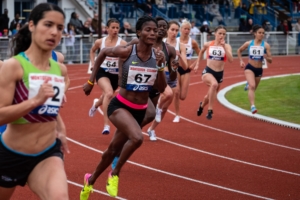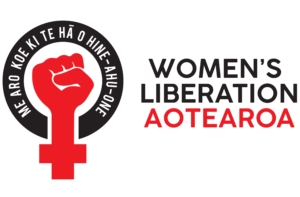Women’s Sports, inclusion & fairness:
Part One
By: Karolyn
13 April 2023
A fair decision; Not a ban
The World Athletics Council are to be congratulated for recently joining international organisations, like World Rugby and swimming’s Fina, in restricting competition in the international women’s athletic division to those who have not gone through male puberty. It’s not banning trans identified males from competition as some of NZ’s media has hysterically proclaimed. Transwomen can compete in the category designated for their sex, subject to further revisions of the policy. It is up to men to make transwomen welcome, safe, and accepted in their competitions.
World Athletics made a well-informed decision to protect the ‘integrity’ of the female category, with the possibility of a future open category. It’s a working compromise between the extreme claims of transactivists, and fairness for women.

Photo by Nicolas Hoizey: Lno6-CxVXgo-Unsplash
Such policies are in keeping with the right for transgender people to have protection against discrimination in significant aspects of society such as housing, employment, education, health care and income. However, the well-funded and powerfully connected transgender lobby has been guilty of over-reach in its demands, and this is very clear in the realm of sports. The extreme claims on behalf of transwomen have been increasingly subjected to rational, evidence-based scrutiny, resulting in more sensible measures being gradually adopted.
The claim that some people can be the opposite sex to that to their birth sex doesn’t hold up in the light of scientific evidence of the innate differences between human males and females. Furthermore, a natal male or female cannot be non-binary (i.e., neither male nor female). This is extremely important for activities like sport, where the physical attributes of bodies lead to selection into relevant categories in the interest of fair and safe competition: see for instance, weight classes in boxing, age categories in various sports, and the differentiation between able-bodied and para- competitions.
The impact of naturally occurring testosterone on the male body are long lasting and is not significantly reversed by later opposite-sex hormone treatments, as explained by Emma Hilton and Tommy R.Lundberg. They outline how the beginning of the development of either a male or female reproductive system can first be observed in the womb. There is an increase in testosterone in males in utero and in the first couple of months after birth. Male bodies get a massive increase in testosterone at puberty, which results in significant, long-lasting differences between male and female anatomies.
The big impact on adult male performances is in speed, strength and lung capacity compared with that of adult females. This is the reason for excluding transwomen who have been through male puberty from female sports. World Rugby has also restricted the female category in international competitions to those who have not gone through male puberty. They are no doubt particularly concerned about their responsibility for safe-guarding women rugby players from the possibility of severe injuries, especially to the brain.
It is not sufficient to argue that some males can be found who are not as strong and/or fast as some females. We do not allow the equivalent exceptions for age or weight-based categories of sport. 40-year-old males cannot compete in under-18 years’ categories of sports on the grounds that some 40-year-olds can be found who are not as good in that sport as some 18-year-olds. The reason for such sporting restrictions is category-based and for fairness and safety; like competing against like, and to give maximum opportunities for the whole group in the ‘lower’ category to compete and develop their capabilities.
Restricting the women’s division of most sports to females and others who have not gone through male puberty, with perhaps an open category, would be in the interests of fairness, inclusion, and safety. This should also be the situation in community sports and national competitions, partly because that is where elite athletes first get their experience and opportunities to develop their skills and capabilities. It is particularly important for as many young women as possible to be positively encouraged to participate in sports, with all the physical and health benefits that result, because there are still many who are put off participating due to sex-stereotyping, puberty-related sensitivities, and misogyny in the wider community.
REFERENCES:
Otago Daily Times, “World Athletics bans trans women from competition”, 24 March 2023 https://www.odt.co.nz/sport/athletics/world-athletics-bans-trans-women-competition
Katie Falkingham, BBC Sport, “World Athletics bans transgender women from competing in female world ranking events”, 23 March 2023. https://www.bbc.com/sport/athletics/65051900
Emma Hilton and Tommy R Lundberg, Transgender Women in the Female Category of Sport: Perspectives on Testosterone Suppression and Performance Advantage, Sports Medicine, 51, 199–214 (2021). https://link.springer.com/article/10.1007/s40279-020-01389-3
Professor Holly Thorpe, et al, Sport New Zealand, “Young Women, Sport, Physical Activity, and the Teenage Years: Changing Bodies, Challenges and Opportunities”. https://sportnz.org.nz/resources/young-women-sport-physical-activity-and-the-teenage-years/


Leave a Reply
Want to join the discussion?Feel free to contribute!